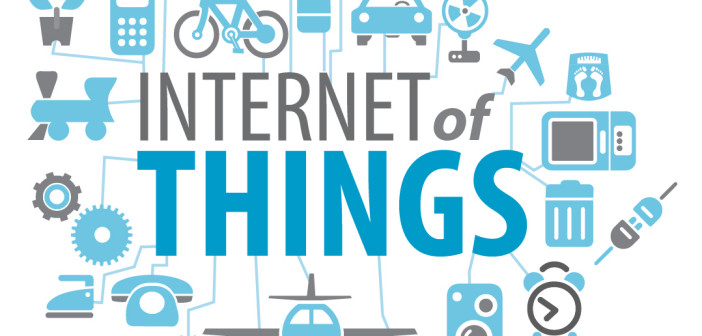By Theresa Bui, head of enterprise product marketing, Cisco Jasper
The meteoric rise of the Internet of Things (IoT) is well documented, although the language used in the industry is all but clear. In an effort to try to differentiate, vendors and industry organisations have introduced a litany of IoT variations including IoX, IIoT, IoAT, IoE, IoYT, or IoST; the list goes on.
While the language used in the industry may confuse, the promises of IoT are clear. Improve your customer experience, gain operational efficiencies, make cost savings, understand your business better through analytics.
So it is understandable why this is such a hotly contested space. IoT has the power to transform business as we know it by connecting companies to customers 24/7/365. With IoT, businesses can deliver new services that dramatically enhance their customers’ experiences while creating new sources of recurring revenue.
Reaping the benefits
Unsurprisingly then, companies worldwide are developing strategies to become IoT businesses and reap the benefits. According to The Economist, 95% of CxOs are planning to launch an IoT business initiative in the next three years, which could mean that in 10 years’ time every company will be an IoT service business.
Furthermore, everyone wants a slice of the pie. More and more solutions providers are jumping on the bandwagon. While it’s great for enterprises to have so much choice, the risk is that as an industry we are muddying the waters of what IoT really is and who should be able to benefit from it, be they enterprises, manufacturers or consumers.
The multiplicity of players entering the market and talking about it in different but overlapping ways is confusing and obscures the benefits of IoT.
This confusion can most clearly be seen in the way the term ‘IoT platform’ has been quickly co-opted by everyone trying to enter the IoT solutions market. By allowing that to become a generic term, the industry runs the risk of discouraging companies that might otherwise be interested in learning how IoT can help them. Customers need to be able to clearly see from the terminology that solution A is an ‘IoT application enablement platform’ that does X and solution B an ‘IoT services platform’ that can help with Y.
The industry needs to get back to basics regarding what IoT is about and what real world benefits each of the different IoT solutions can provide.
Working out the basics
The first step really is how to work out what will generate value. How do you get past the IoT ‘hype cycle’ and enable real, value-added services for your customers? Here are three key considerations for businesses getting started in IoT:
1 Think big
As you plan your IoT business, think big. Remember you may want to expand your IoT services globally over time. So choose IoT solutions and business partners that will enable you to scale your IoT services as you grow.
2 Go to the cloud
To ensure the best possible customer experience over your network of tens, thousands, or millions of connected things, you need real time visibility and control. The software as a service (SaaS) model delivered through the cloud gives you speed, efficiency and global access as well as lowering the cost of entry. It also supports business scalability and agility.
3 Automate
Any attempt to manually handle processes like device management, diagnostics, billing and provisioning of services would be highly inefficient and costly. You should review the core business processes around maintaining your services and devices and automate as many of them as possible. Define automated business rules to control how your connected devices and services should work. This lets you focus on the core operational tasks that deliver value.
Duck-billed platform
Capitalising on your IoT business goes far beyond the initial phase of finding the right device and rate plan, and turning on connectivity. There are many layers of complexity. But at the moment, the different types of technologies being offered by vendors are often lumped in together as ‘platforms’, which makes it hard to distinguish between what each one enables, where they fit in the IoT stack and how they can be deployed together.
Here is a rundown of the basic camps of vendors you’re likely to hear from. Many vendors offer solutions that range across the solutions described below:
Application Enablement Platforms
These solutions provide tools and templates to rapidly create end-user applications. Some types of AEPs will process and manage the data from the applications and include data analytics and dashboards. Larger vendors like Oracle, CA and SAP have offerings as well as newer providers such as AppDynamics, New Relic, and Ruxit.
1 IoT services platforms
These solutions enable businesses to launch, manage and monetise IoT services via their connected devices. These platforms provide visibility and real time control for connected service businesses, along with capabilities like provisioning, mobile service management, real time engagement, support diagnostics, billing and business automation..
2 Connectivity management platforms
Connectivity management platforms are typically integrated into or with mobile carrier networks to facilitate the provisioning of data services (data, voice, and/or SMS) allowed on each device and their associated rate plans (each device’s monthly bill). They may also handle plan activation and billing, network usage and performance monitoring, and data plan changes, among other things. Connectivity management solutions are typically offered by the major mobile carrier networks in different.
3 Mobile device management
Device management platforms enable users to remotely configure and manage device settings, monitor their status and resolve issues having to do with the device itself.
Final word
We know that becoming a connected services business brings huge opportunities, and also new operational challenges. As you plan your IoT initiatives, make sure you get a clear understanding of the ongoing costs involved, the potential revenue from new service offerings, the cost savings, and the time it will take to achieve ROI. There are plenty of resources out there, and take best practice inspiration from other businesses. Even if the tips and insight come from different industries, it’s useful to have as broad and deep a picture of the opportunities as possible.
Cisco Jasper’s IoT platform enables thousands of companies to launch, manage and monetise IoT services on a global scale.





